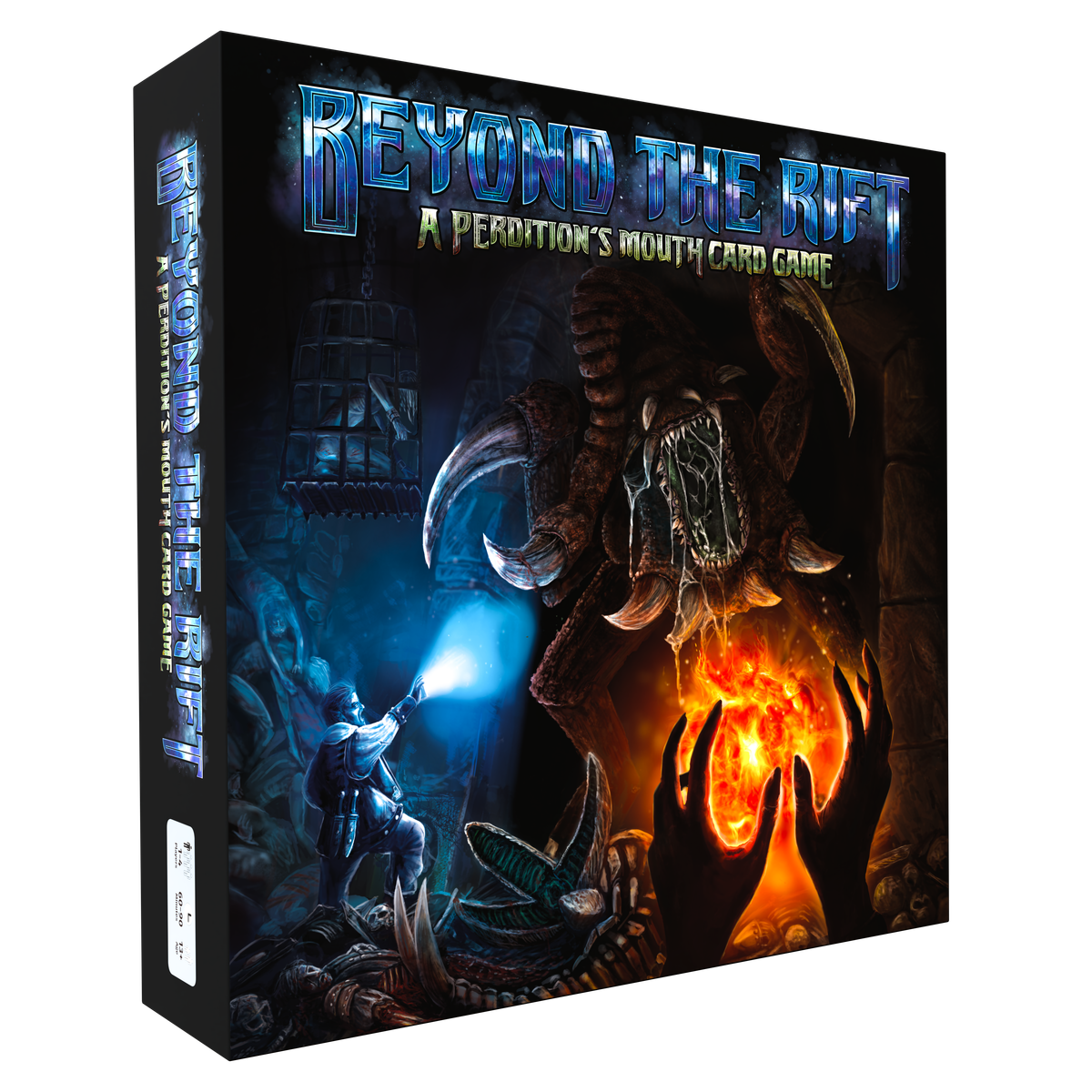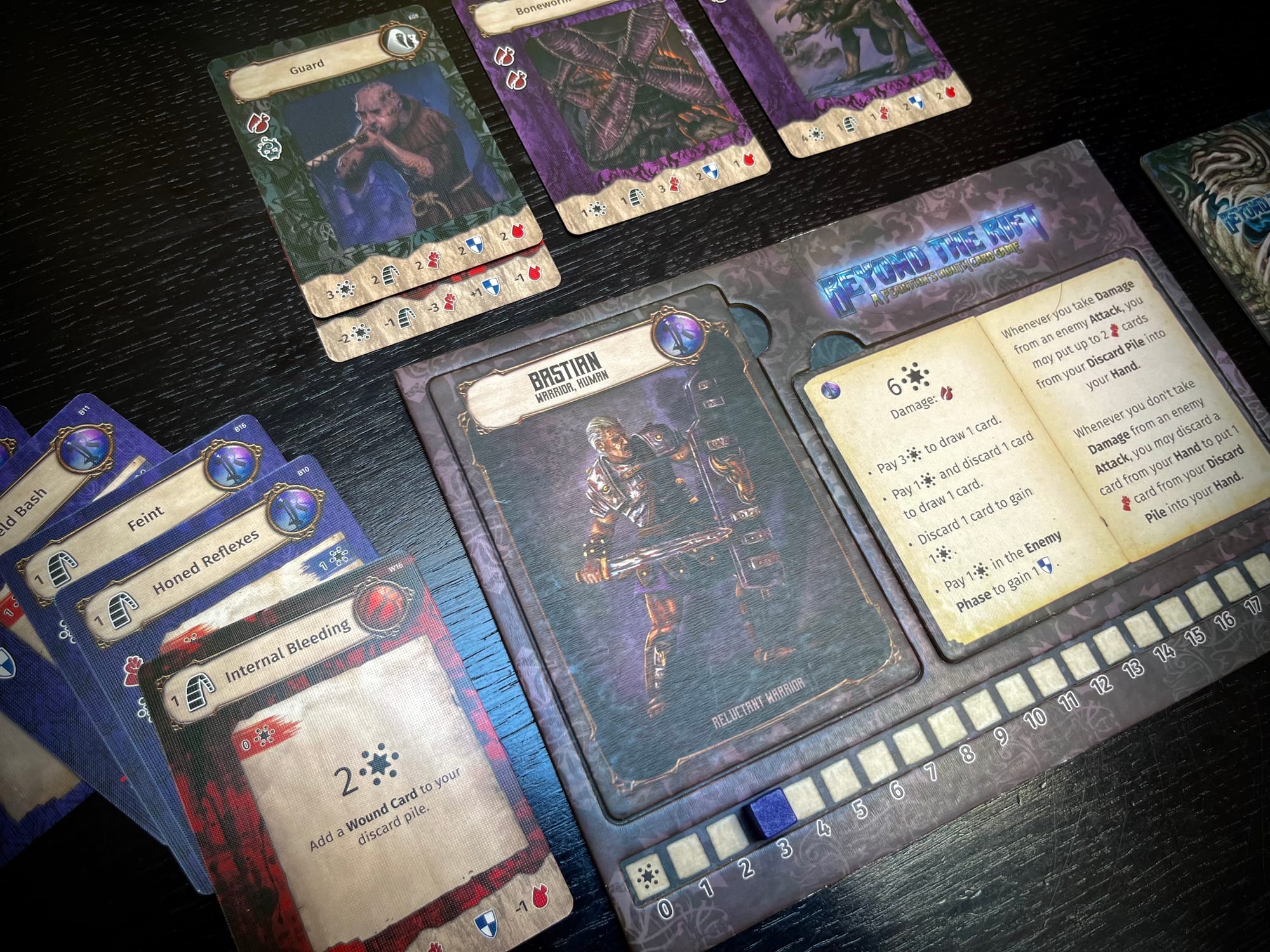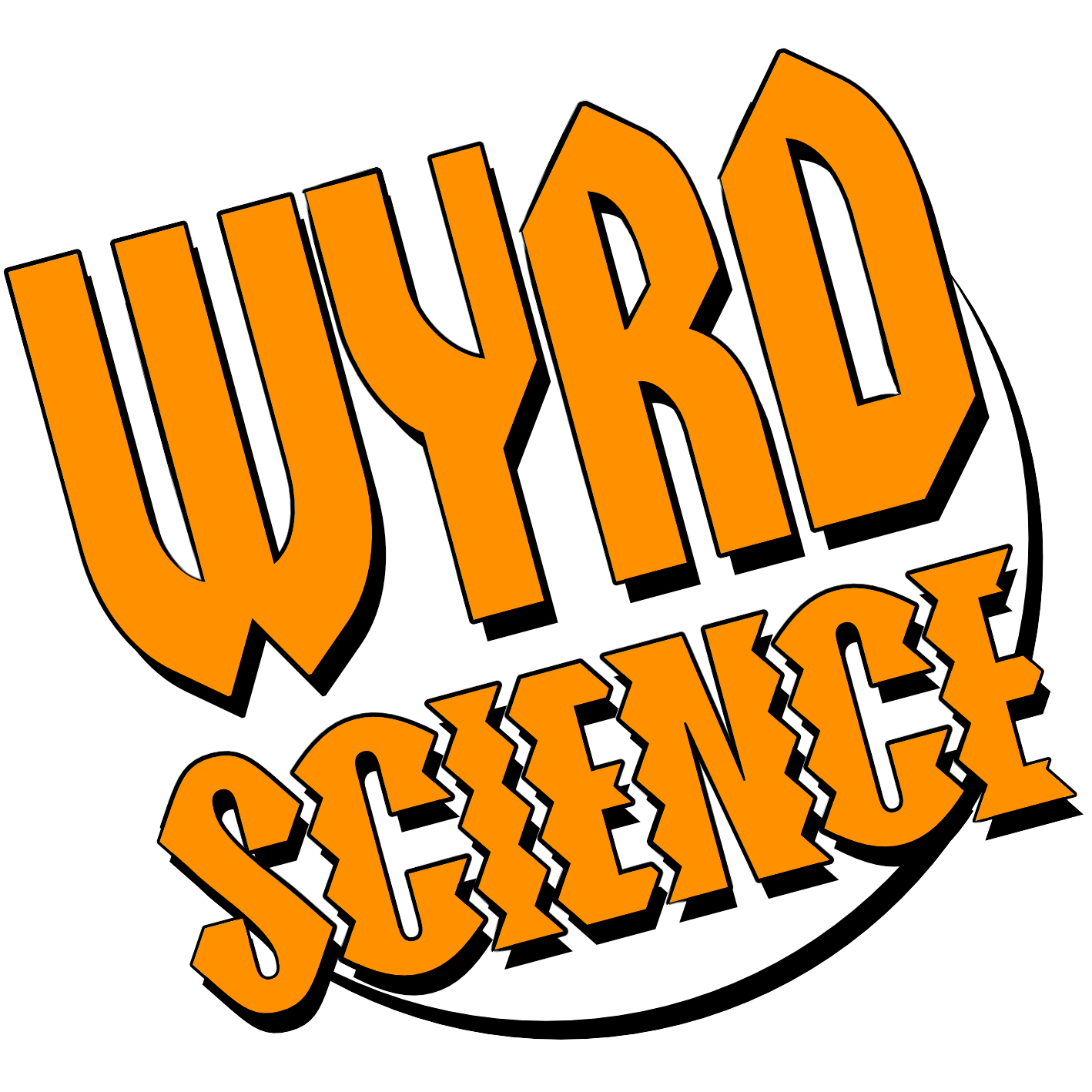
Dungeon crawl board games are in many ways a distillation of traditional RPGs, a pared back and focused experience that more often than not hones in on two of the key three pillars, exploration and combat. Whilst they may impose constraints upon the breadth of what actions your characters can take that often allows them to go into more mechanical depth, or at least make combat more satisfying than just rolling to hit.
Beyond The Rift takes this a step further. The game is a sequel to 2016’s cult hit Perdition’s Mouth: Abyssal Rift, which itself made some interesting design choices. Whilst it came packed with the expected amount of dungeon tiles to explore and plastic figures to push around, Perdition’s Mouth took several of its design cues from the Eurogame genre. Out went dice replaced by an element of deck building and taking centre stage was a rondel used for activating the characters and defining what actions they could take each round.
Its follow up flenses even more meat from the bone, removing both board and miniatures to focus on the combat side of the dungeon crawl experience. Whilst it has lost the rondels Beyond The Rift still retains much of what gave the original game a lot of its flavour, most notably how wound cards are allocated to your characters, inexorably crowding out your hand as your increasingly bloodied characters push their way through each level.
Talking of characters those are the same too, indeed the story picks up almost exactly where the original game’s campaign ended with the horrific death rattle of the demon that you’ve have just eviscerated. If you’ve played through Perdition’s Mouth then you’ll already know the characters and many of the enemies they’ll go up against, a fairly grim mix of creatures with names like Boneworms, Rotikkas and whatever a Tharnix is.
It’s won’t affect your enjoyment of the game too much if you’re new to it all though, whilst the majority of the enemies are unique to this world it doesn’t take too much to figure out that they are all basically pretty disgusting things with far too many teeth to go round. Still it wouldn’t have hurt to provide you with a little more setting background, especially as the art on the cards can be fairly dark and indistinct at times.
Anyway, it’s a co-operative game for 1-4 players.Personally, like many of these kind of co-operative games, I enjoyed it more as a solo game, where i played multiple characters myself. Too often with co-op games I find there’s a tendency for an optimal strategy to appear, and whoever figures that out can, inadvertently or not, dominate the play. This is particularly the case here, as unlike a traditional dungeon crawler where each player may be off investigating different areas, you’re essentially all running through one specific encounter at the same time. Who knows, perhaps I’m just an awful co-operative player but either way as a solo game it shines.
Even if you are planning on playing this in a group though I’d definitely advise at least one player to have had a crack at it on their own first anyway. Whilst, once understood, the rules aren’t ridiculously complicated they do have their peculiarities and I wouldn’t expect most people to just be able to pick it up and run it straight out of the box.
To be honest most of my issues came down to how the game takes something reasonably familiar, in this case a dungeon crawl, and reworks it as a card game. For a good half hour I felt like I was battering my head against a brick wall before suddenly it all clicked into place. The game’s patterns appeared, I started appreciating how each character's abilities play off each others, whilst the zonal system -by which enemy cards move in and out of range- went from an infuriatingly abstract concept to a simple and elegant solution.

Once you’ve wrapped your head around it, the game itself is split into a series of campaigns, each comprised of around half a dozen scenarios, though due to each campaign’s branching structure you’ll only ever play around half of them on any one go.
Every scenario comes with its own different setup that proscribes how to build an enemy deck, how new monsters might spawn, any special rules for that particular scenario and the relevant win conditions. It has to be said, as in so many other areas the game’s designer, Nikolas Lundström Patrakka, has done an exceptional job squeezing so much juice out of relatively few components and making the scenarios, that range from straight up fights to rescuing innocents, guarding dwarf miners and carousing with pirates, feel different.
Once a scenario is under way you must manage your hand and action points, work your way through the rooms, engage enemies and play cards that variously deliver different amounts of damage, boost your own defences or provide you with more action points. This is where the game really shines as it is in many ways a puzzle with its various parts spread between the different characters and their cards. Figuring out the interplay between these and then stringing together, hopefully, devastating combos gives you a real sense of achievement. It’s basically that part in a film where the team finally get their shit together and start working as one to overcome otherwise insurmountable odds.
At the same time, and working against you, your hands are inevitably filling up with wound and fatigue cards. These are cards that you can either play, at a cost to your action points, attack or defence or hoard at the risk they run out and your character dies when the next one is allocated. With wounds generally not healing naturally in between scenarios, there’s a careful balance in play here and if you’re not careful you can easily become overwhelmed.
Once you’ve got the flow of the game, you’ll be completing most scenarios in around 30 to 40 minutes and, unless you end up being ripped apart by monstrous insects, and that will happen, you should easily be able to work through a campaign in an evening.
Beyond The Rift exhibits some real design craft and several ideas that deserve to be looted themselves by other games. It may be hampered by the odd lackluster graphic design choice and a rulebook that could have done with another pass but if you’re looking for a gritty yet distilled dungeon crawl experience with an interesting narrative and that can provide a considerable challenge then it is well worth giving a go.
Game design: Nikolas Lundström Patrakka
Published by Dragon Dawn Productions
This feature originally appeared in Wyrd Science Vol.1, Issue 4 (April '23)

